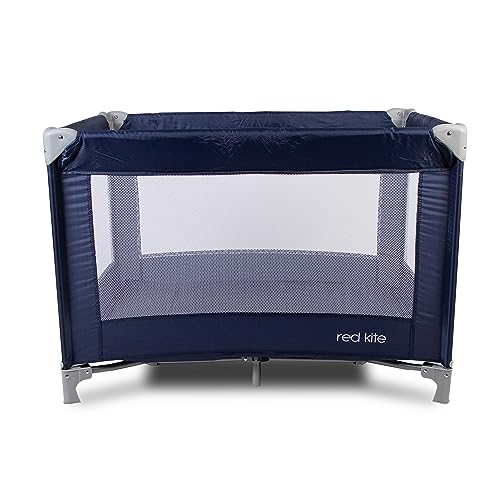Does Technology Make Tots And Cots Better Or Worse?
페이지 정보
작성자 LB 작성일25-08-09 13:56 (수정:25-08-09 13:56)관련링크
본문

Tots and Cots: A Comprehensive Guide for Parents
When it pertains to making sure a safe and comfortable sleeping environment for children and young children, the choices parents make-- ranging from cribs to cots-- can substantially affect their well-being. Today's article dives deep into the complexities of picking the very best sleeping plans for tots, stressing security, style, functionality, and how these options evolve as a kid grows.
Understanding Tots and Cots
Tots generally describe young kids, particularly young children aged between 1 to 3 years, while cots are the sleeping arrangements particularly designed for babies and young children. The appropriate sleeping equipment for this age group consists of various types of cots, cribs, and toddler beds.
Kinds of Cots
Different designs exist to meet the diverse needs of both parents and children. Below is a list describing the most common kinds of cots available:
Standard Crib
- A conventional crib is developed for babies and generally includes sides that can be gotten used to various heights.
Convertible Crib
- This type of crib can transform into a toddler bed, daybed, or full-sized bed as the child grows, making it a long-lasting investment.
Portable Crib
- Likewise understood as travel cots, these are light-weight and quickly collapsible, ideal for taking a trip or smaller sized living spaces.
Co-Sleeper
- A co-sleeper crib connects to the side of the parents' bed, enabling for easy access while ensuring the baby has a separate and safe sleeping space.
Toddler Bed
- A young child bed is a little bed that resembles a standard bed but is created particularly for young children, normally including safety rails.
Mini Crib
- Mini cribs are smaller sized than standard cribs, making them a fantastic option for tight areas, but they are appropriate for infants just.
Safety Considerations
Making sure security is vital when selecting a cot for a child. Here are vital safety guidelines moms and dads ought to think about:
- Check for CPSC Certification: Ensure that the cot abides by the Consumer Product Safety Commission (CPSC) standards.
- Prevent Drop-Sides: Cots with drop-sides have actually been linked to safety threats, and the most recent security guidelines restrict them.
- Use a Firm Mattress: A company bed mattress minimizes the risk of suffocation and must fit snugly within the cot.
- Keep Bedding Simple: Use a fitted sheet and avoid pillows, comforters, and packed animals that can posture suffocation risks.
- Follow Weight and Age Guidelines: Ensure the kid has not exceeded the cot's weight limitation and is still within the suggested age.
Transitioning from a Cot to a Toddler Bed
The shift from a cot to a toddler bed can be a psychological milestone for both moms and dads and kids. Here are steps to alleviate the shift:
Timing
Deciding when to transition can be subjective, but it's generally advised to make the switch in between 18 months and 3 years, based upon elements like:
- Physical Ability: If the kid is climbing up out of the cot.
- Potty Training: Consider transitioning if the child is potty training and needs easier access.
- Behavior: Exhibiting signs of maturity, such as following instructions or expressing a desire for self-reliance.
Tips for Making the Transition Smooth
Include Your Child: Let the kid choose their brand-new bed linen or bed decor to instill excitement about the change.
Keep Routine Consistent: Maintain the kid's bedtime routine to offer comfort during this duration of modification.
Explain the Change: Discuss the transition to a young child bed positively, making it seem like a great experience.
Precaution: Place the bed versus the wall or usage bed rails to prevent falling during sleep.
Choosing the Right Bed
When picking a toddler bed, moms and dads require to consider aspects like:
- Height: Low-profile beds are perfect for young children who might fall out during sleep.
- Durability: Ensure the bed can withstand active play along with sleep.
- Design and style: Choose a design that matches the child's room and is appealing to the child.
Selecting the best Infant cribs cot for your youngster can be a daunting process, however understanding the alternatives offered, key security considerations, and the ideal timing for transitioning to a young child bed can make this journey much easier for parents. Investing time and effort into these choices will guarantee that your child has a safe, comfortable, and nurturing sleep environment.
Frequently asked questions
1. What is the distinction between a cot and a crib?
- A cot is usually a smaller bed designed for younger young children, while a crib is a bigger bed that is usually suitable for babies approximately 3 years of ages.
2. When should I move my child from a crib to a young child bed?
- The transition time is generally in between 18 months and 3 years; this change is based on the kid's physical abilities and behavioral signs.
3. How can I ensure my child is safe while sleeping?
- Always stick to security requirements, utilize a firm mattress with a simple bed linen arrangement, and keep track of the cot's weight limit.
4. What should I do if my child attempts to climb out of the cot?

- If your child is climbing out, it may be time to consider transitioning to a toddler bed to avoid falls.
5. Can I use the same mattress when transitioning?
- Generally, it is best to change the crib bed mattress with one that is specific to the young child bed. Guarantee it fits snugly and sticks to safety standards.
By thinking about these elements, parents can model healthy sleep routines and offer their children with a safe environment that promotes peaceful sleep. Purchasing quality sleeping arrangements will add to the kid's general advancement and happiness.
댓글목록
등록된 댓글이 없습니다.

